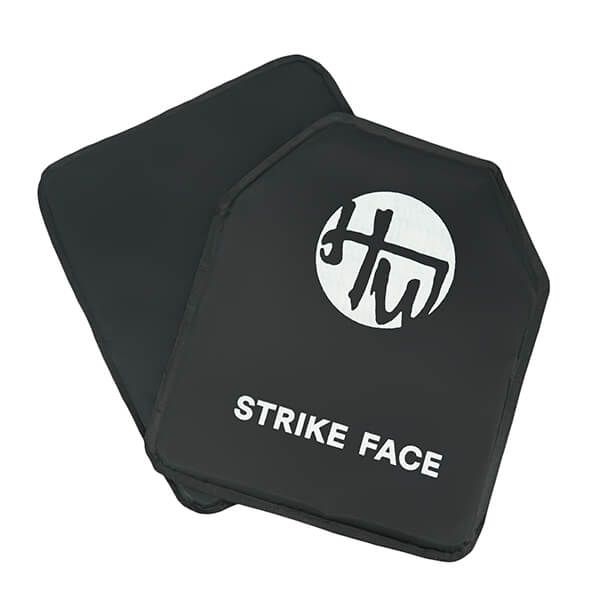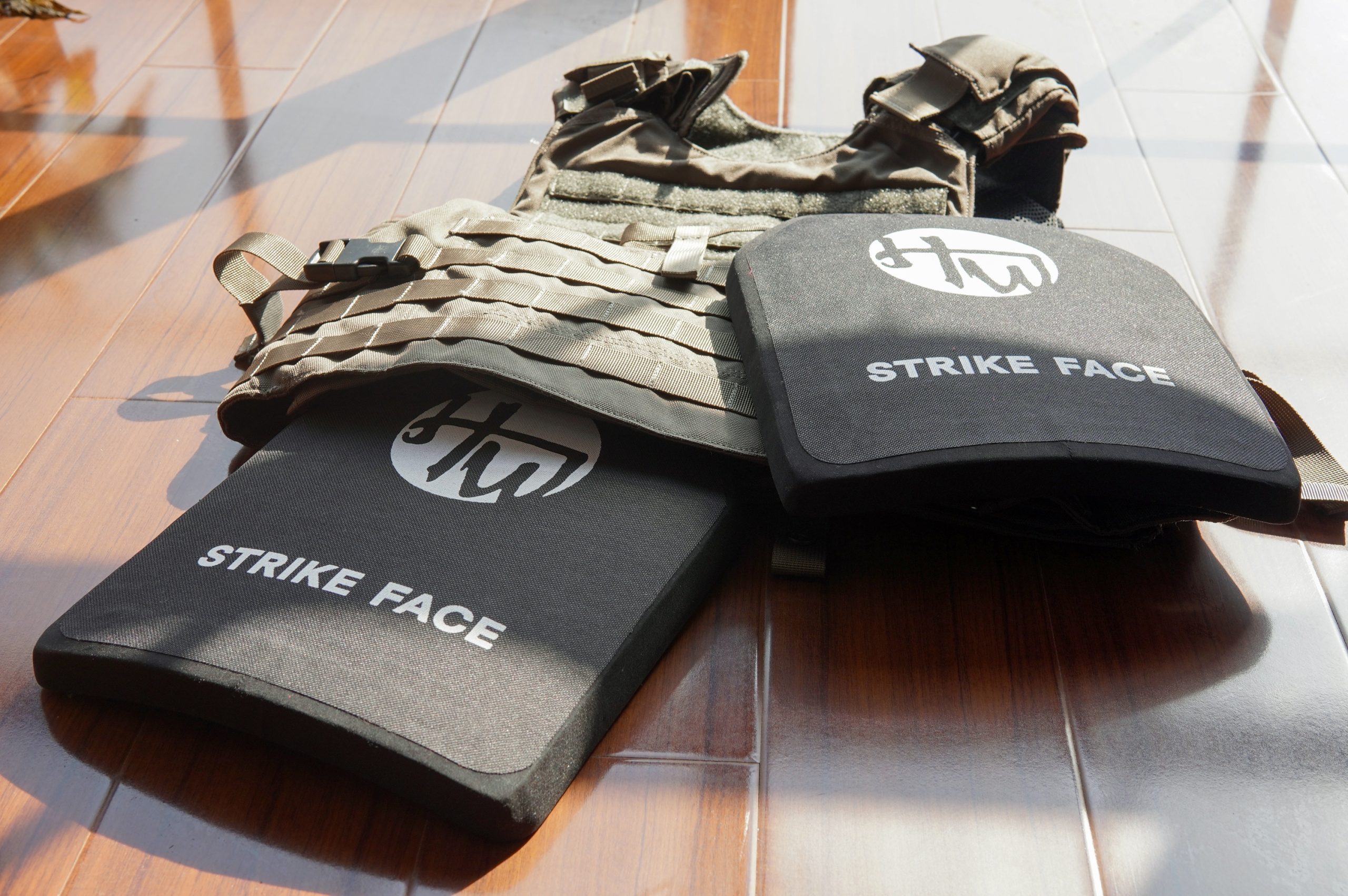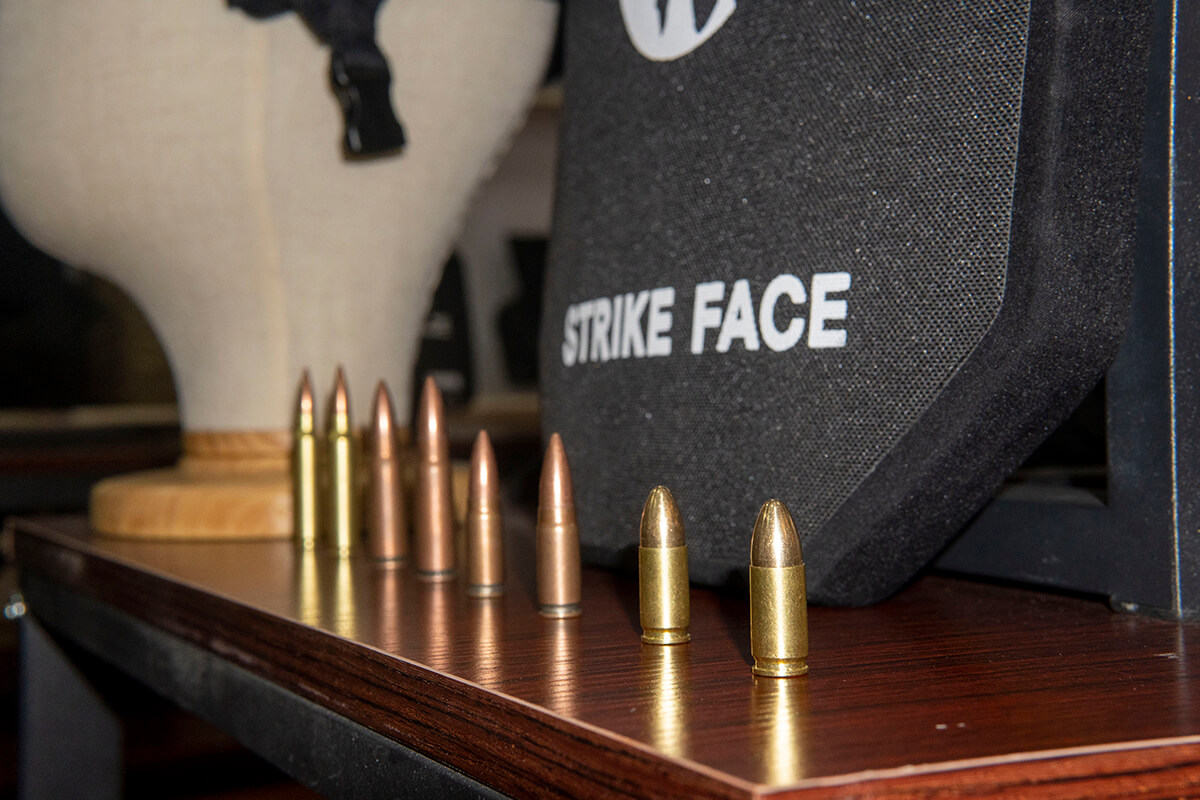Introduction
Polyethylene (PE) body armor plates are gaining popularity for good reason. Their lightweight design, multi-hit capability, and resistance to corrosion make them a strong choice for many in law enforcement, military, and even civilian protection. Whether you are selecting your first plate or upgrading an existing setup, knowing the strengths and weaknesses of PE body armor will help you make a better decision. This guide explains how polyethylene armor works, what it excels at, where it falls short, and how it compares to other armor types like steel and ceramic.
What is Polyethylene (PE) Body Armor?
Polyethylene armor is made using Ultra-High-Molecular-Weight Polyethylene (UHMWPE), a plastic material known for its incredible strength-to-weight ratio. These fibers are woven tightly and pressed together under extreme heat and pressure. The result is a rigid plate that can stop bullets by spreading and absorbing their energy.
PE is used in both soft armor and hard plates. This article focuses on the hard plate version, which is most commonly worn inside a plate carrier to protect against rifle rounds and other high-powered threats.

Key Advantages of PE Body Armor
Lightweight and Comfortable to Wear
PE plates are significantly lighter than steel or ceramic alternatives. This matters more than you might think. When you wear armor for extended periods—during patrols, training, or emergencies—every pound counts.
-
Better mobility: Less weight means quicker movement and faster reaction times.
-
Reduced fatigue: Wearing lighter gear helps you stay active longer without overexerting yourself.
-
Improved comfort: Less shoulder and back strain when worn over long durations.
If you prioritize speed, mobility, or long-term comfort, PE plates offer a real advantage.
Excellent Multi-Hit Performance
While no armor is indestructible, PE plates are designed to take multiple hits and still function. When a bullet strikes, the plate’s fibers absorb and redistribute the energy instead of shattering.
-
Durability under fire: PE plates can often stop multiple rounds, depending on the shot placement and caliber.
-
More reliable in real scenarios: This feature is crucial during unpredictable, high-stress situations.
However, it’s important to understand that multi-hit performance depends on the specific model and the threat level it’s rated for.
Spall-Free Protection
One of the most dangerous issues with steel armor is spall—the fragments of metal that can break off and cause injury when a bullet hits. PE plates do not have this issue.
-
No spall: You don’t need to add extra coatings to protect against dangerous fragments.
-
Improved safety for you and your team: There’s less risk of collateral injuries during close-quarters situations.
This makes PE body armor cleaner and safer for both the user and those nearby.
Buoyancy
PE armor plates float. That’s a built-in advantage for anyone operating around water, whether it’s law enforcement, military divers, or search and rescue teams.
-
Stays afloat: If you fall into water while wearing PE armor, the plates won’t pull you down.
-
Useful in maritime operations: They add a small layer of protection in aquatic scenarios where heavier plates would be a liability.
Corrosion and Moisture Resistance
Steel armor can rust. Even ceramic plates can degrade if exposed to moisture over time. PE armor is naturally resistant to corrosion and chemicals.
-
No rusting: This makes it ideal for wet, humid, or coastal environments.
-
Chemical resistance: Useful for professionals working in hazardous or industrial zones.
-
Long service life: With minimal maintenance, PE plates retain performance for many years.

Disadvantages of PE Armor
Higher Price
PE armor is more expensive to produce than steel and some ceramic options.
-
Upfront cost: If you’re on a strict budget, PE plates may not be your first choice.
-
Value over time: While pricier, the added comfort, safety, and longevity may make the cost worthwhile for professionals who wear armor often.
Heat Sensitivity
PE plates have a relatively low melting point—around 130°C (266°F). Exposure to high heat can affect their performance.
-
Not for hot storage: Don’t leave your PE armor in a vehicle under the sun for extended periods.
-
Operational caution: In extremely hot environments, such as desert operations, ceramic or steel might be more suitable.
While it’s unlikely that PE will melt during use, improper storage or environmental extremes could reduce its reliability.
Less Effective Against Certain Threats
Standard PE plates typically meet NIJ Level III standards, which cover many common rifle threats. However, they may not stop armor-piercing rounds unless designed to Level IV with added ceramic layers.
-
Not ideal for AP rounds: Pure PE plates struggle with high-velocity penetrators unless specially reinforced.
-
Know your threat level: Choose plates based on the likely threats you’ll face.
In high-threat zones, hybrid or ceramic plates might be necessary to ensure full protection.
Thicker Profile
To stop the same rounds as ceramic or steel, PE plates often need to be thicker. This is the trade-off for their lightweight construction.
-
Bulkier appearance: May print under clothing more visibly.
-
Less ideal for concealment: PE plates are not the best option for low-profile operations.
That said, for overt use with full plate carriers, this is rarely a serious drawback.
PE vs. Steel vs. Ceramic: A Quick Comparison
| Feature | Polyethylene (PE) | Steel | Ceramic |
|---|---|---|---|
| Weight | Lightest option | Heaviest | Medium to heavy |
| Cost | Moderate to high | Lowest | High |
| Thickness | Thicker than others | Thinner | Thinner than PE |
| Spall Risk | None | High (requires coating) | Low |
| Multi-Hit | Good, depending on rating | Excellent | Moderate |
| Bullet Resistance | Stops most rifle rounds | Stops common rounds | Stops even AP rounds |
| Heat Resistance | Low (heat sensitive) | High | Medium |
| Buoyancy | Floats | Sinks | Sinks |

Is PE Armor Right for You?
If your priority is lightweight protection with good multi-hit performance and zero spall risk, PE body armor a strong choice. They’re especially useful if you spend long hours in the field, operate in wet environments, or need freedom of movement. However, if you’re facing armor-piercing threats or extreme heat, ceramic or steel might be more suitable.
Before purchasing, consider:
-
Your mission: Is weight more important than maximum threat protection?
-
Your environment: Will you be exposed to extreme heat, water, or chemicals?
-
Your budget: Can you justify the higher cost for better comfort and mobility?
If the answer to those leans toward mobility, wearability, and safety over bulk and cost, PE is worth the investment.
Care and Maintenance Tips
To keep your PE body armor in peak condition:
-
Store it right: Always store in a cool, dry place away from direct sunlight or heat sources.
-
Inspect regularly: Look for warping, cracks, or any damage before each use.
-
Clean with care: Use mild soap and water; don’t use harsh chemicals.
-
Avoid drops: Although PE isn’t as fragile as ceramic, dropping the plate can still cause internal damage.
Conclusion
Polyethylene body armor plates offer a modern, high-performance solution for those who need to stay mobile without sacrificing safety. Their light weight, multi-hit capability, and resistance to water and chemicals make them suitable for a wide range of tactical and professional uses.
However, they aren’t ideal for every scenario. If you require thin, low-profile armor or are facing armor-piercing rounds regularly, consider ceramic or steel options. Still, for most users seeking dependable protection with maximum comfort, PE plates strike a solid balance.
